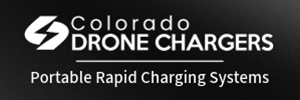QC uses the data lines to negotiate voltage with the device. I don't know how the negotiation works, but I had read it might be a small and specific resistance across the data lines.
You are using an out of date browser. It may not display this or other websites correctly.
You should upgrade or use an alternative browser.
You should upgrade or use an alternative browser.
Time taken to charge 3 batteries?
- Thread starter deepakvrao
- Start date
D
Deleted member 109934
Guest
So it seems the data cables are not supporting higher voltage, not the actual power cables, interesting I have to read about this. I was completely blown away, my old Blackberry cable supports 12V and the cable that came with fast charger did not, go figure 
I didn't say that. I said the data lines are used to negotiate the voltage, not carry the voltage/current.
OK here's how QC works. It's based on applying 0.6v or 3.3v on the D+ and D- lines as if 0.6v is logic 0 and 3.3v is logic 1, and each of the data lines as a separate input.
Logic voltage is in reference to ground.


Logic voltage is in reference to ground.

Hacking Qualcomm (Quick Charge) QC 2.0/3.0 With ATtiny85
Get not only 5 volts but also 9, 12 volts (18 Watts max) out of any QC-compatible charger/power bank for supplying power hungry projects. By Shahariar.
www.hackster.io

D
Deleted member 109934
Guest
OK here's how QC works. It's based on applying 0.6v or 3.3v on the D+ and D- lines as if 0.6v is logic 0 and 3.3v is logic 1, and each of the data lines as a separate input.
Logic voltage is in reference to ground.
View attachment 87859
Hacking Qualcomm (Quick Charge) QC 2.0/3.0 With ATtiny85
Get not only 5 volts but also 9, 12 volts (18 Watts max) out of any QC-compatible charger/power bank for supplying power hungry projects. By Shahariar.www.hackster.io
Thanks a lot, great link! I had no clue!
Why some of those cables do not work, technically this should work without a problem, D- is a white cable inside. It does not look like cable depended, but port dependent.
256 minutes Full 3 battery charge according to spec. I will leave this here! Please add to the thread if it took longer or less.
Just collecting Data from users.
Just collecting Data from users.
It took me some time to find it. All the "how it works" sites would say what we already know: 9 or 12v is negotiated between device and charger. Yes, we know but HOW is it negotiated.Thanks a lot, great link! I had no clue!
Why some of those cables do not work, technically this should work without a problem, D- is a white cable inside. It does not look like cable depended, but port dependent.
Now I have to set something up so my dad can use the powebank I gave him for Christmas 2 years ago to provide portable 9 and 12v.
The cable does have to pass through data connection from charger to device and not just power connection. Charge only ports and cables may have a resistor on the data pins to the device rather than passing the lines through.
Note that I found Samsungs may get stubborn going into fast charge, particularly if the charger is not Samsung brand. Just reboot the Samsung. There's also a setting available to turn off fast charging but not to disable charging altogether.
D
Deleted member 109934
Guest
It took me some time to find it. All the "how it works" sites would say what we already know: 9 or 12v is negotiated between device and charger. Yes, we know but HOW is it negotiated.
Now I have to set something up so my dad can use the powebank I gave him for Christmas 2 years ago to provide portable 9 and 12v.
The cable does have to pass through data connection from charger to device and not just power connection. Charge only ports and cables may have a resistor on the data pins to the device rather than passing the lines through.
Note that I found Samsungs may get stubborn going into fast charge, particularly if the charger is not Samsung brand. Just reboot the Samsung. There's also a setting available to turn off fast charging but not to disable charging altogether.
So it seems it is pretty much impossible to visually determine if the cable has a resistor that would block negotiation...I guess cheaper the better, I can see those resistors might be there as a feature to lock it only to 5V.
Similar threads
- Replies
- 22
- Views
- 6K
- Replies
- 10
- Views
- 2K
- Replies
- 4
- Views
- 1K
DJI Drone Deals
New Threads
-
Inspiring the Next Generation of Drone Pilots. (By Timothy Brazzel)
- Started by The Droning Company
- Replies: 1
-
Pendleton UAS Range Partners with STRATIV Group
- Started by The Droning Company
- Replies: 1
-
Should Authorities reconsider line of sight with 360 drones ?
- Started by Pacefast
- Replies: 4
-
-
4 Pro Night Christmas Boats Parade
- Started by MikeReidPhotography
- Replies: 4









